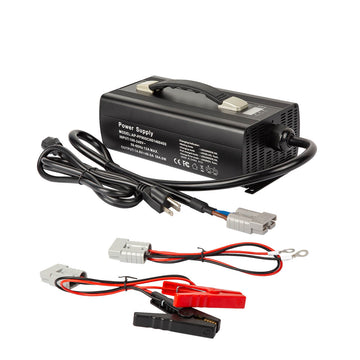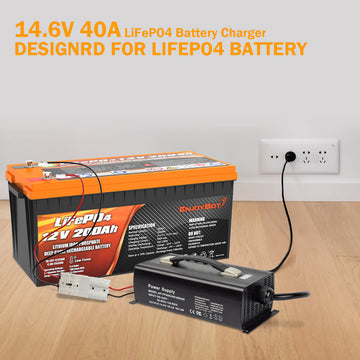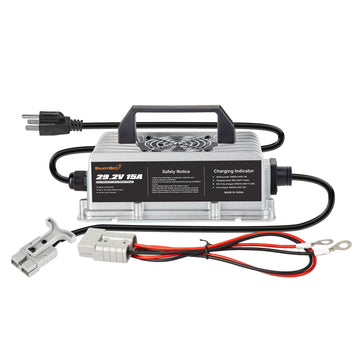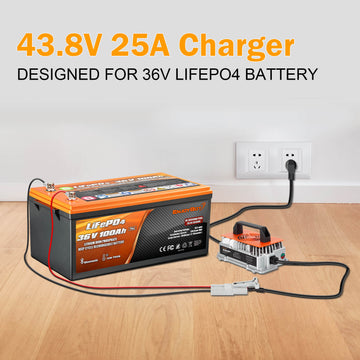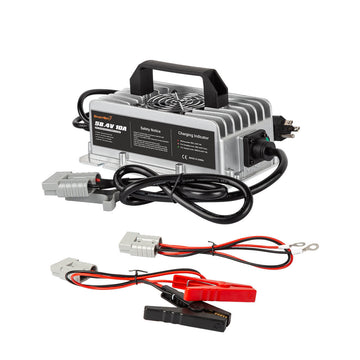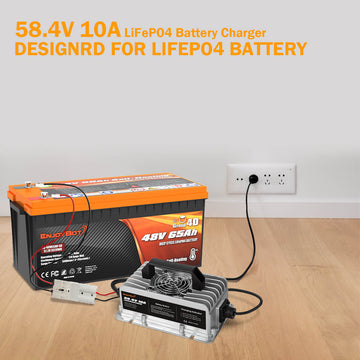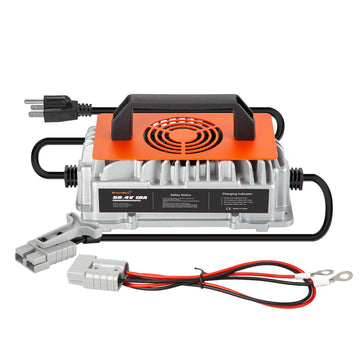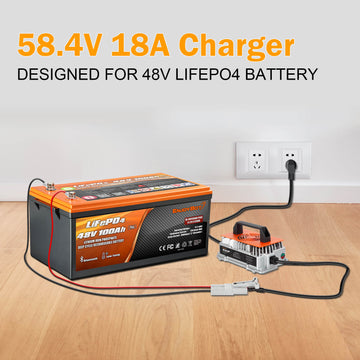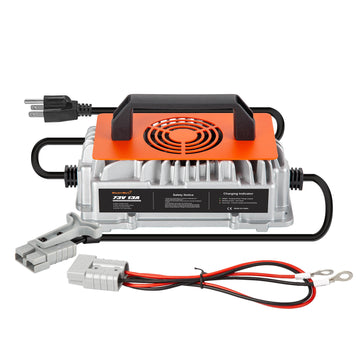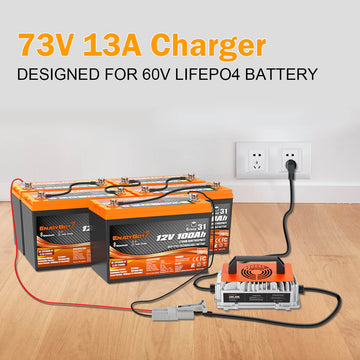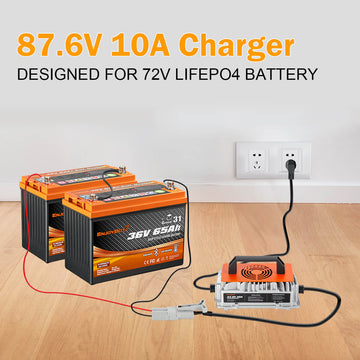Why Lithium Battery Is Best for RV Solar System?
In RV power systems, the choice of batteries is crucial. It dictates how long you can venture off-grid and how reliable your power source will be. This article will delve into the age-old debate, Lithium versus AGM batteries. Additionally, we'll explore how many lithium batteries are ideal for an RV solar system and whether 24 or 12 volts are better for powering your mobile home.
Table contents of this article
- Lithium batteries Versus AGM batteries
- How many lithium batteries for the RV solar system
- 24 Volts Versus 12 Volts battery systems for RVs
Lithium batteries Versus AGM batteries
This detailed comparison outlines several essential factors that RV enthusiasts should consider when deciding between lithium batteries, such as Enjoybot, and AGM batteries, like Renogy, for their energy storage needs. Let's delve into some comparisons.
Useable storage capacity comparison
To meticulously assess the contrast in usable storage capacity between Enjoybot lithium batteries and Renogy AGM batteries, our standard practice involves discharging lithium batteries to 20% of their capacity and AGM batteries to 50%. This careful discharge regimen is implemented to optimize the longevity and performance of the batteries, ensuring prolonged and efficient operation.
Each battery has a nominal voltage of 12V and a capacity of 100Ah.
The total capacity of four batteries is 12V * 100Ah * 4 = 400Ah.
They can be discharged to 20% of their capacity, resulting in a usable capacity of 400Ah * 80% = 320Ah.
Renogy AGM batteries:
Each battery has a nominal voltage of 12V and a capacity of 100Ah.
The total capacity of four batteries is 12V * 100Ah * 4 = 400Ah.
AGM batteries should only be discharged to 50% of their capacity, resulting in a usable capacity of 400Ah * 50% = 200Ah.
Given that the requirement is for 300Ah of usable storage:
With Enjoybot lithium batteries, you already have 320Ah of usable capacity, exceeding the requirement.
With Renogy AGM batteries, each battery provides a reliable 50Ah of usable capacity. To achieve 300Ah, you would need 300Ah / 50Ah per battery = 6 batteries. This reliability should make you feel secure about your energy storage choice.
Therefore, to meet the requirement of 300Ah of usable storage:
Enjoybot lithium batteries: four batteries are sufficient.
Renogy AGM batteries: You would need six batteries.
Lifespan
To assess the longevity disparity between Enjoybot and Renogy AGM batteries:
Comparative Lifespan of Lithium vs. AGM Batteries: Enjoybot batteries, leveraging lithium technology, boast a notably longer lifespan than Renogy AGM batteries. Typically, lithium batteries endure 4000-6000 cycles at an 80% discharge depth, while AGM batteries like Renogy's are rated for a mere 500 cycles at a 50% discharge depth.
To contextualize this discrepancy, let's examine the cumulative capacity delivered over the lifespan of both battery variants:
Enjoybot batteries: 4000-6000 cycles at an 80% discharge depth.
Renogy AGM batteries: 500 cycles at a 50% discharge depth.
Assuming equivalent initial capacities for both battery types, we can calculate the total capacity delivered over their respective lifespans:
Enjoybot batteries: 4000-6000 cycles * 80% = 3200-4800% of the initial capacity.
Renogy AGM batteries: 500 cycles * 50% = 250% of the initial capacity.
Enjoybot batteries deliver between 12.8 to 19.2 times more capacity over their lifespan than Renogy AGM batteries.
This analysis underscores the substantial longevity advantage of Enjoybot batteries over Renogy AGM batteries, which is consistent with the anticipated extended lifespan associated with lithium battery technology.
Size
Dimensions of one battery: 12.95 inches (L) x 6.77 inches (W) x 8.42 inches (H
Total volume of one battery: 12.95 x 6.77 x 8.42 = 728 cubic inches
Renogy AGM Batteries:
Dimensions of one battery: 13.1 inches (L) x 6.9 inches (W) x 8.6 inches (H)
Total volume of one battery: 13.1 x 6.9 x 8.6 = 792 cubic inches
Given these dimensions, let's calculate the total volume for each set of batteries:
Total Volume of Four Enjoybot Lithium Batteries: 4 x 728 = 2914 cubic inches
Total Volume of Six Renogy AGM Batteries: 6 x 792 = 4753 cubic inches
Comparing the total volumes of the two setups, we can see that the Renogy AGM batteries occupy significantly more space than the Enjoybot lithium batteries. The Renogy setup is approximately 1838 cubic inches larger than the Enjoybot setup. Thus, there is a notable difference in the total size between the two configurations.
Weight
Given the weight variances between AGM and lithium batteries, it's logical to opt for lithium batteries for the Enjoybot. Each Enjoybot lithium battery weighs 23 pounds, and four batteries total 92 pounds. A similar AGM battery with a 100-amp hour capacity weighs around 65 pounds, with six batteries adding up to 390 pounds. This significant weight difference means that by choosing Enjoybot lithium batteries, you save 298 pounds, providing ample storage capacity for RV supplies, tools, and toys. Considering the proximity to the RV's maximum gross vehicle weight rating, this decision becomes crucial for full-time living and traveling.
Cost
Cost Analysis:
Enjoybot lithium batteries: $279.99 each, totaling $279.99 * 4 = $1119.96 for 300 amp hours of usable storage.
AGM batteries: $206.99 each, totaling $206.99 * 6 = $1241.94 for 300 amp hours of usable storage.
Usable Storage Comparison:
Each Enjoybot lithium battery provides 80 amp hours of usable storage (20% drain).
Each AGM battery provides 50 amp hours of usable storage (50% drain).
Total Cost Comparison:
Enjoybot lithium batteries cost $1119.96 for 300 amp hours of usable storage.
AGM batteries cost $1241.94 for 300 amp hours of usable storage.
Enjoybot lithium batteries are slightly cheaper than AGM batteries, costing $121.98 less for 300 amp hours of usable storage.
Additionally, Enjoybot lithium batteries weigh half as much as AGM batteries and are expected to last longer due to their deeper discharge capabilities.
So, the Enjoybot lithium batteries offer a better value proposition regarding cost, weight, and expected lifespan than AGM batteries.
Other Factors
Warranty: Enjoybot offers a 10-year warranty, while Renogy AGM provides only a 2-year warranty for material and artistry. This suggests a significant difference in long-term reliability and customer support.
Installation Orientation: Understanding how the battery needs to be installed is crucial for compatibility with your setup.
Maintenance: Different battery chemistries require varying levels of maintenance. Consider your willingness and ability to maintain the battery over its lifespan.
Charging at Low Temperatures: Lithium batteries cannot be charged at low temperatures without risking permanent cell damage. AGM batteries can be charged at lower temperatures, albeit with reduced efficiency. Keep an eye on emerging technologies like Enjoybot's self-heating batteries, which aim to address the issue of charging at low temperatures.
Long-Term Value: Despite the initial investment, lithium batteries offer better long-term value due to their durability and overall performance.
While both Enjoybot lithium batteries and Renogy AGM batteries have their advantages and disadvantages, the analysis suggests that Enjoybot lithium batteries offer a better overall value proposition in terms of cost, lifespan, size, weight, and usable storage capacity. However, consumers must evaluate their specific needs and preferences before deciding.
How many lithium batteries do I need in my RV solar system?
Conducting thorough research is crucial to purchasing four Enjoybot 100 amp hour batteries for your solar inverter project. Many other fifth-wheel setups utilize batteries with higher capacities ranging from 400 to 600 amp hours. However, considering a limited budget, it's essential to optimize the battery bank size based on the energy requirements of your appliances.
To determine the appropriate number of lithium batteries needed, it's recommended that the wattage usage of each device be calculated and the overall energy consumption assessed. It utilizes a kilowatt meter to measure the energy usage of 120-volt appliances and aids in determining both the battery bank size and the required inverter size.
For instance:
- A desktop computer consumes 250 watts and is used for an average of three hours daily, totaling 750 watt hours per day.
- A TV consumes 80 watts and is operational four hours each night, totaling 320 watt hours/day.
- An air filter consumes 20 watts and runs continuously for 24 hours, totaling 480 watt hours daily.
The combined usage of these appliances amounts to 1550 watt hours per day.
Given that a 100 amp hour battery has a capacity of 1280 watts, four such batteries would provide a total usable capacity of 5120-watt hours. The watt-hours consumed by the computer, TV, and air filter represent approximately 40% of this usable capacity.
Of course, other 12-volt appliances such as lights, fans, propane heaters, RV fridges, water pumps, internet routers, and ceiling fans should also be considered when determining battery requirements.
For a system equipped with a 3000-watt inverter, four to six 100-amp-hour batteries would be sufficient. Systems with two 3000-watt inverters typically require six to eight 100 amp-hour batteries. In contrast, those designed to run air conditioners solely on batteries may necessitate eight to twelve such batteries, along with multiple inverters and ample solar panels to accommodate the increased energy demand. Therefore, aligning your battery setup with your needs and budget constraints is crucial.
12 Volts Versus 24 Volts battery systems for RVs
When contemplating between a 24-volt and a 12-volt battery system, several factors come into play, each affecting the efficiency and cost of your setup.
Firstly, opting for a 24-volt battery system reduces the amp draw on the wires by half compared to a 12-volt system, given the same power load. This reduction in amp draw enables smaller wires to connect system components. Smaller wires not only incur lower costs but also simplify installation processes. The diminished amp draw also decreases voltage drop across the system, enhancing operational efficiency.
A general guideline to consider is the power capacity of your inverter system. If you are designing a system with a power output exceeding 3000 watts, a 24-volt battery system becomes a more viable option. Conversely, for systems generating less than 3000 watts, a 12-volt system suffices.
Another advantage of a 24-volt system lies in its compatibility with many Maximum Power Point Tracking (MPPT) solar controllers. These controllers can accommodate double the solar panel input when charging a 24-volt system compared to a 12-volt system.
For instance, when comparing the charging capabilities of MPPT solar controllers:
A solar controller charging a 12-volt battery bank can handle up to 1440 watts of solar panel input.
In contrast, a solar controller charging a 24-volt battery bank can manage a higher input of up to 2880 watts.
However, it's essential to acknowledge one drawback associated with a 24-volt battery bank: the necessity of installing an additional component known as a DC-to-DC converter. This converter is indispensable for converting the 24-volt battery power to 12 volts, which is required for operating 12-volt RV appliances such as lights, fans, hydraulic slide and leveling motors, and tail lights. While facilitating compatibility, these DC-to-DC converters contribute to the overall cost of the system.
The decision between a 24-volt and a 12-volt battery system hinges on various factors, including power requirements, wire size considerations, operational efficiency, and compatibility with solar controllers. Each option presents its own set of advantages and trade-offs, ultimately shaping the system's suitability for specific applications.
Conclusion
Choosing between lithium and AGM batteries in RV power systems can significantly impact your travel experience. When determining the number of lithium batteries for your RV solar system, careful calculation of power needs is essential. As for the debate between 24 volts and 12 volts, it largely depends on your RV setup and personal preferences. Ultimately, understanding the nuances of each option will empower you to make the best choice for your mobile lifestyle.

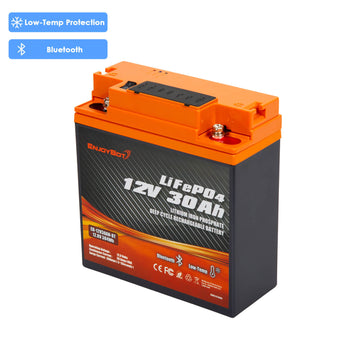
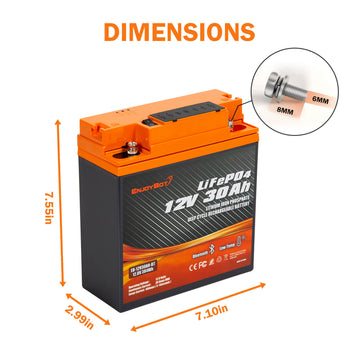
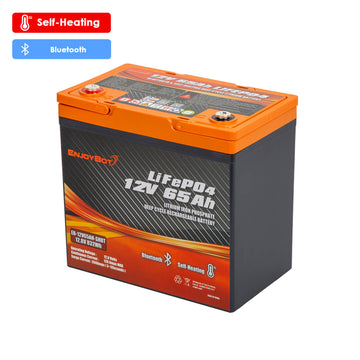
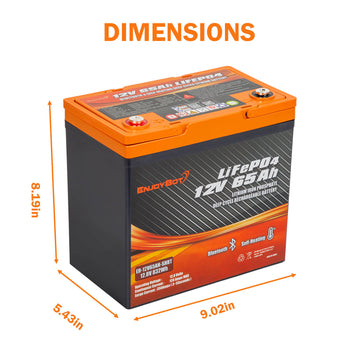
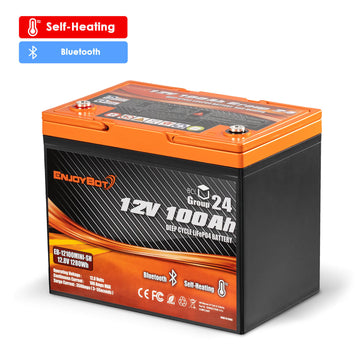
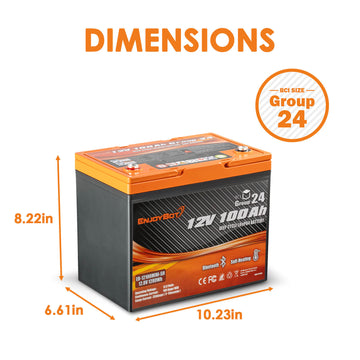

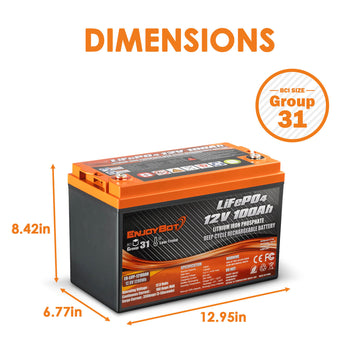

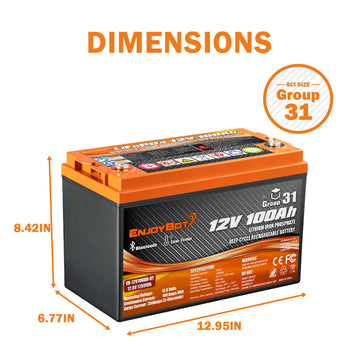

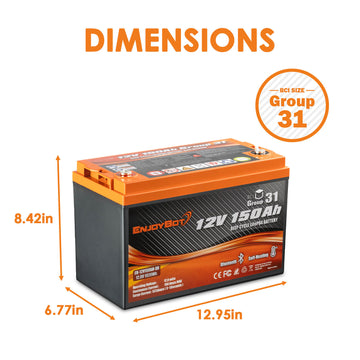




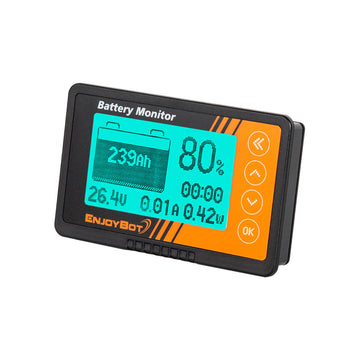
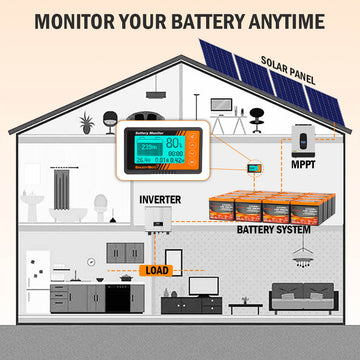
![[Upgraded Version] Enjoybot 14.6V 20A Waterproof Mountable LiFePO4 Lithium Battery Charger For 12V LiFePO4 Battery](http://enjoybotbattery.myshopify.com/cdn/shop/files/14.6V_20A_Waterproof_Battery_Charger_1_360x.jpg?v=1752565609)
![[Upgraded Version] Enjoybot 14.6V 20A Waterproof Mountable LiFePO4 Lithium Battery Charger For 12V LiFePO4 Battery](http://enjoybotbattery.myshopify.com/cdn/shop/files/14.6V_20A_Waterproof_Battery_Charger_2_360x.jpg?v=1752637374)
